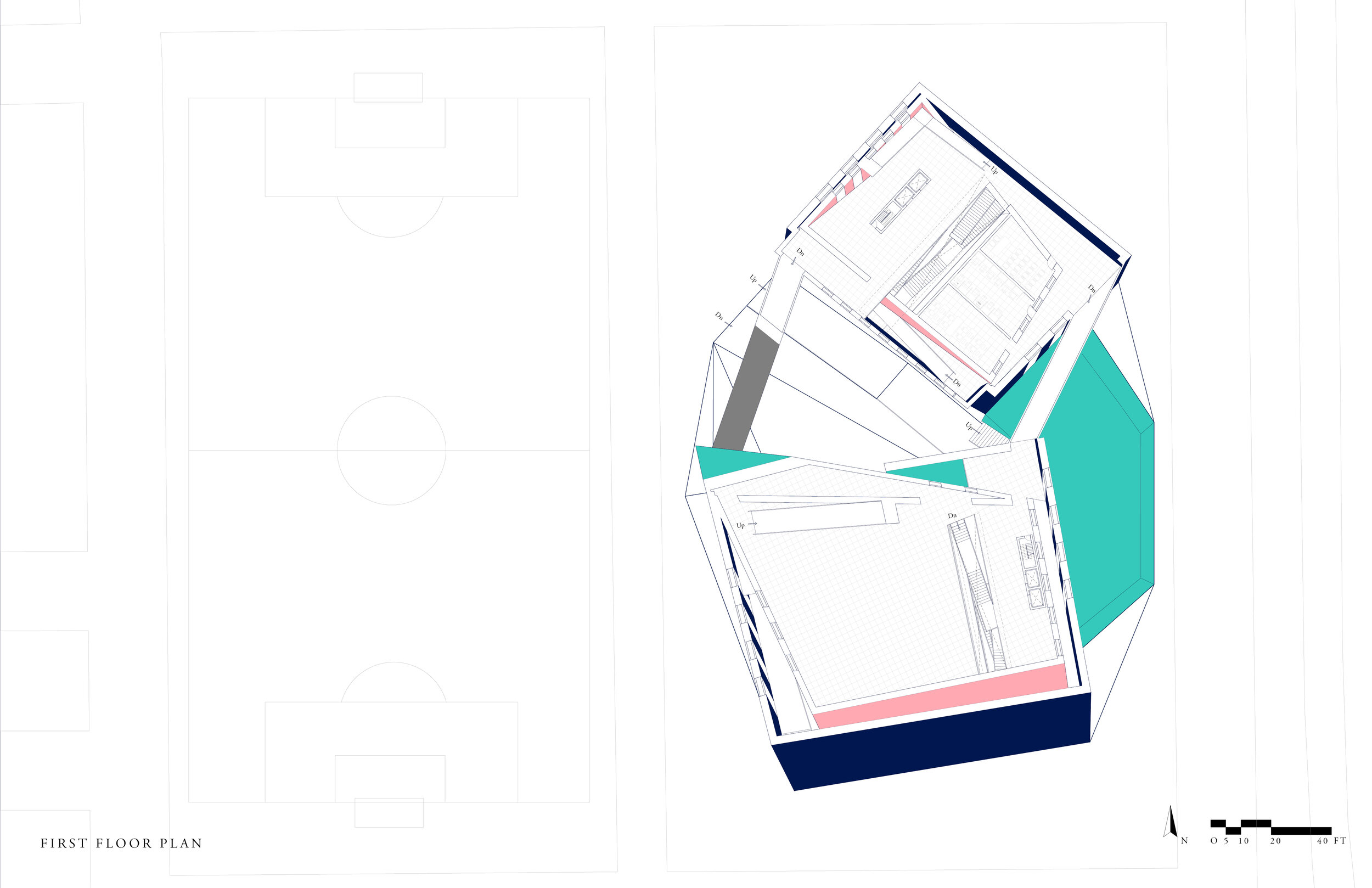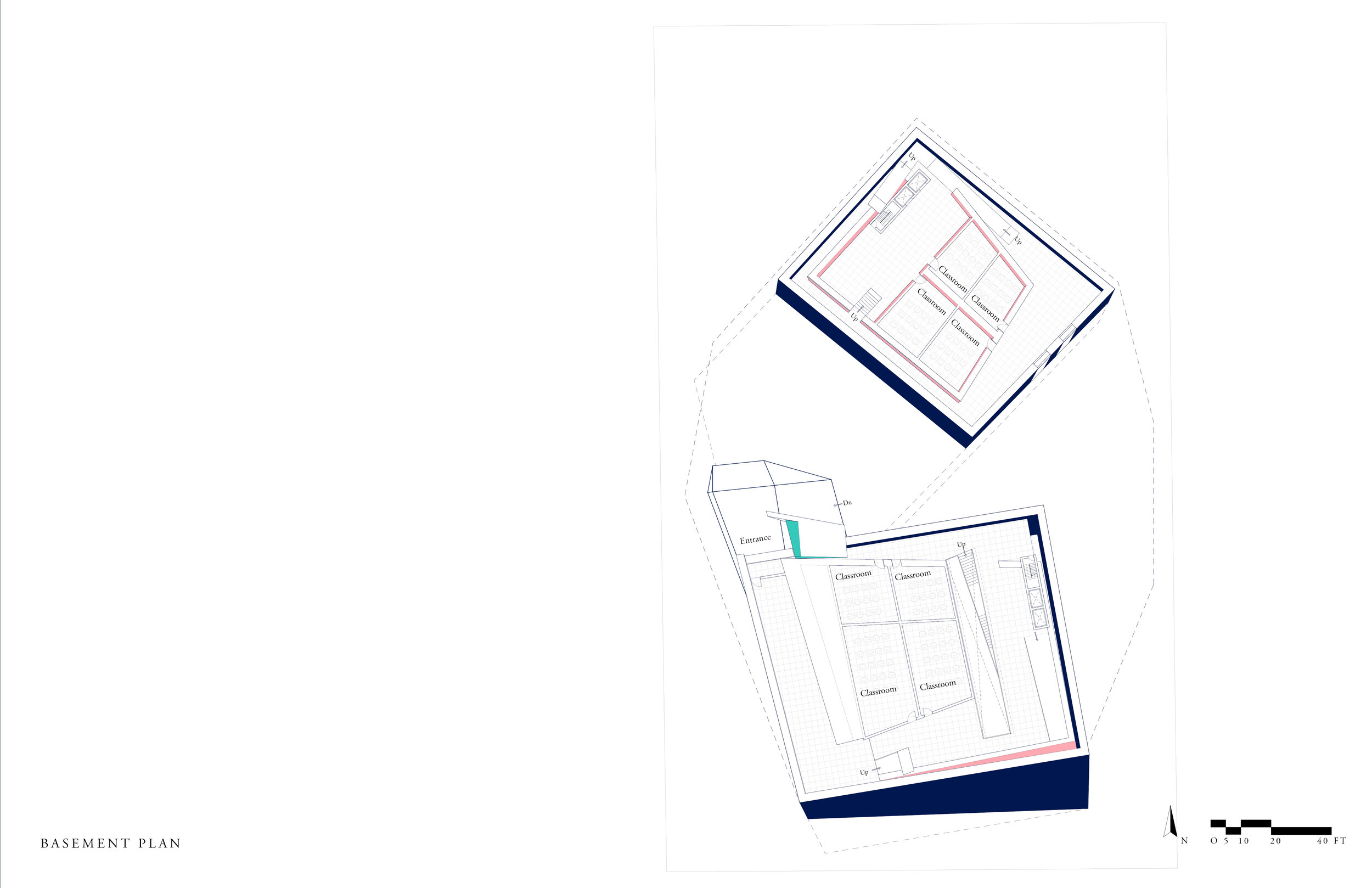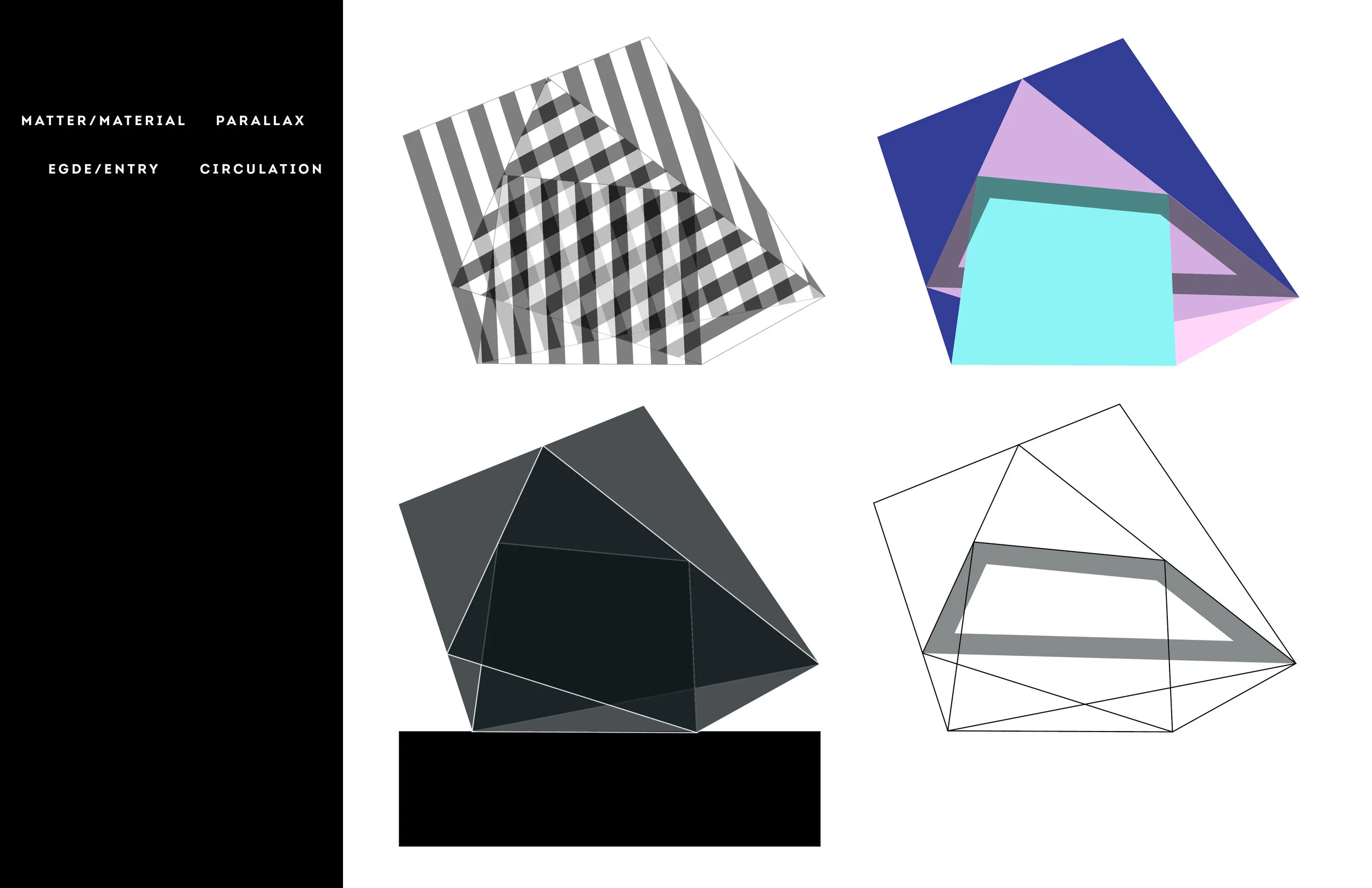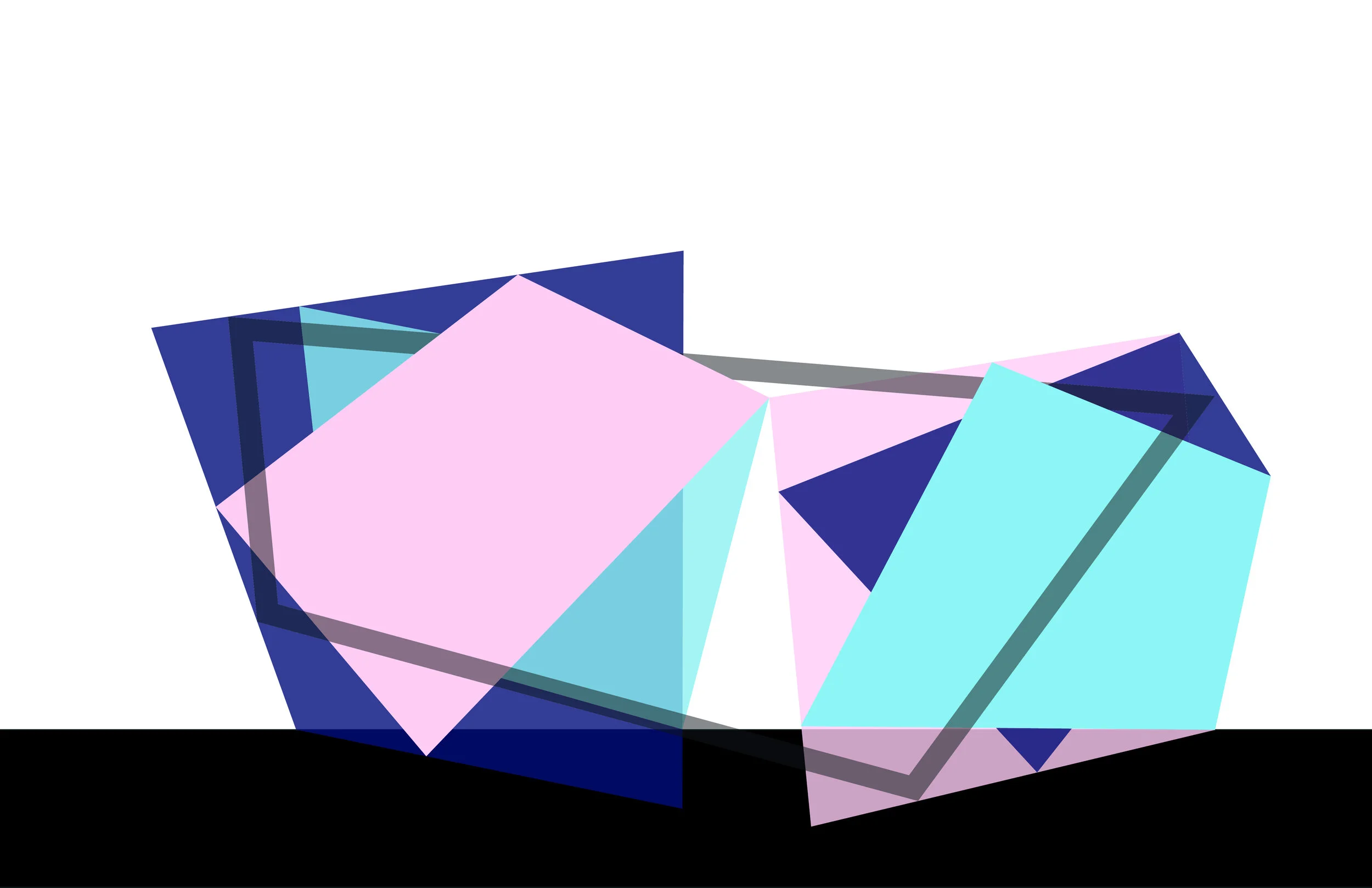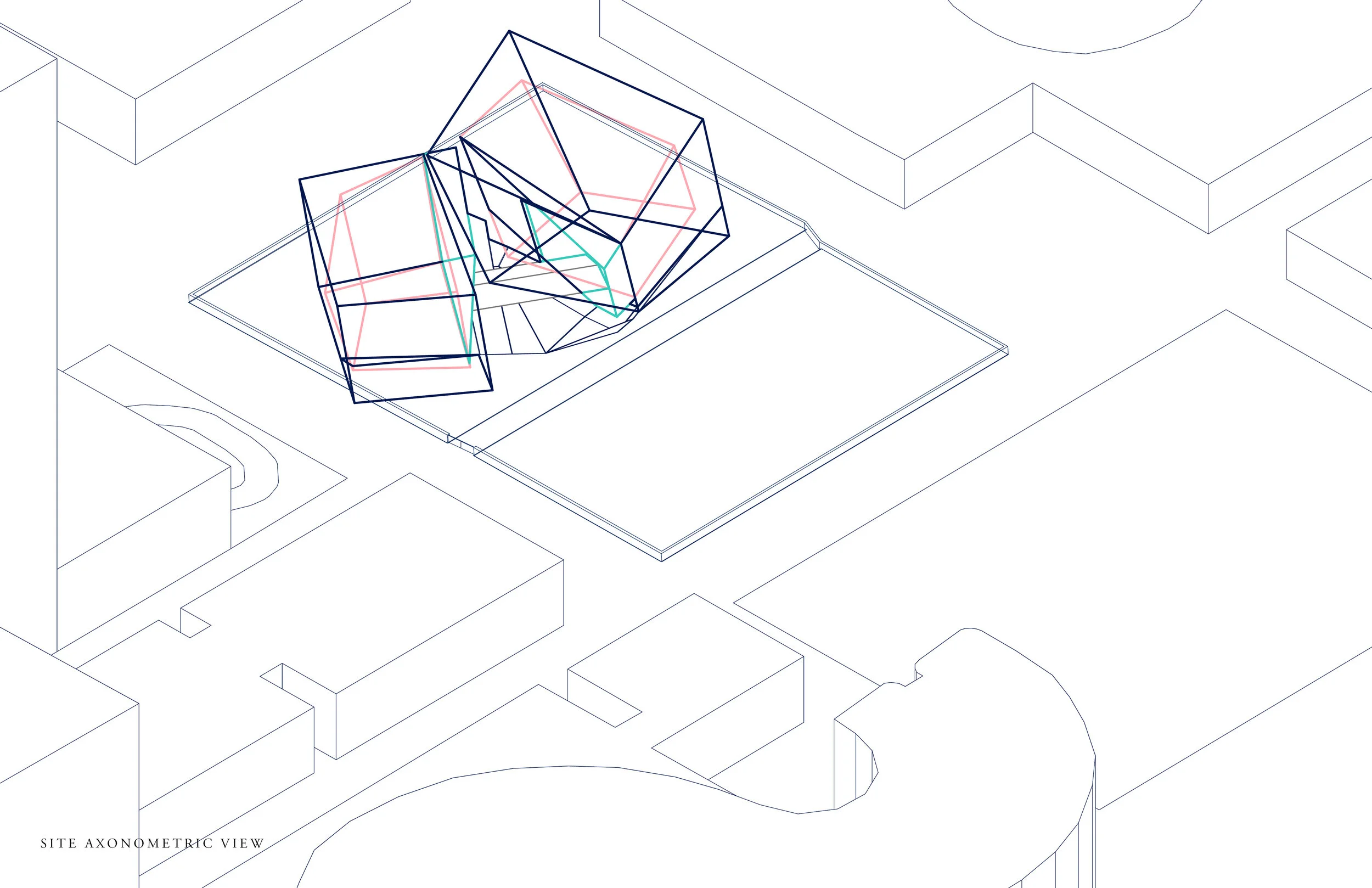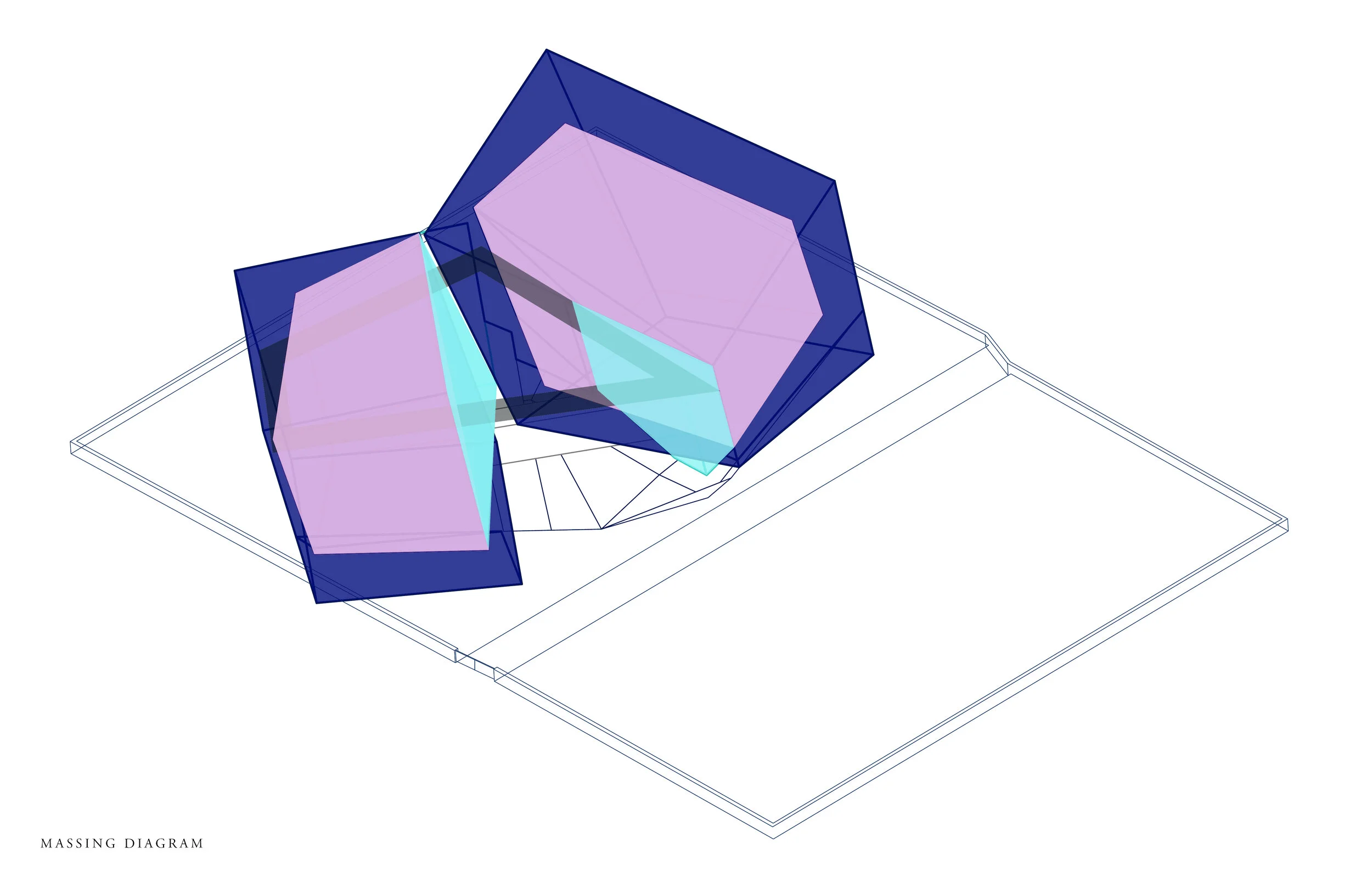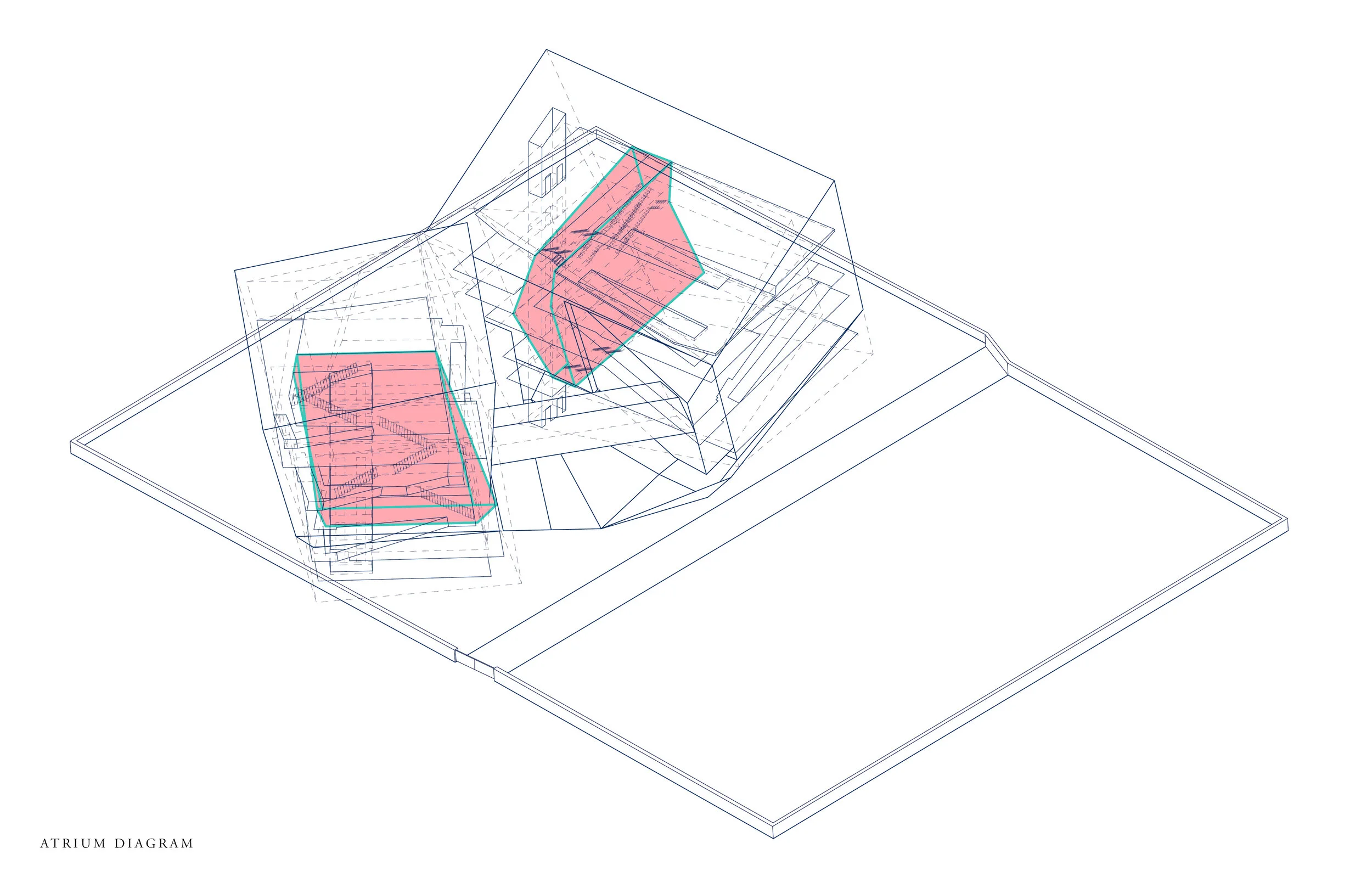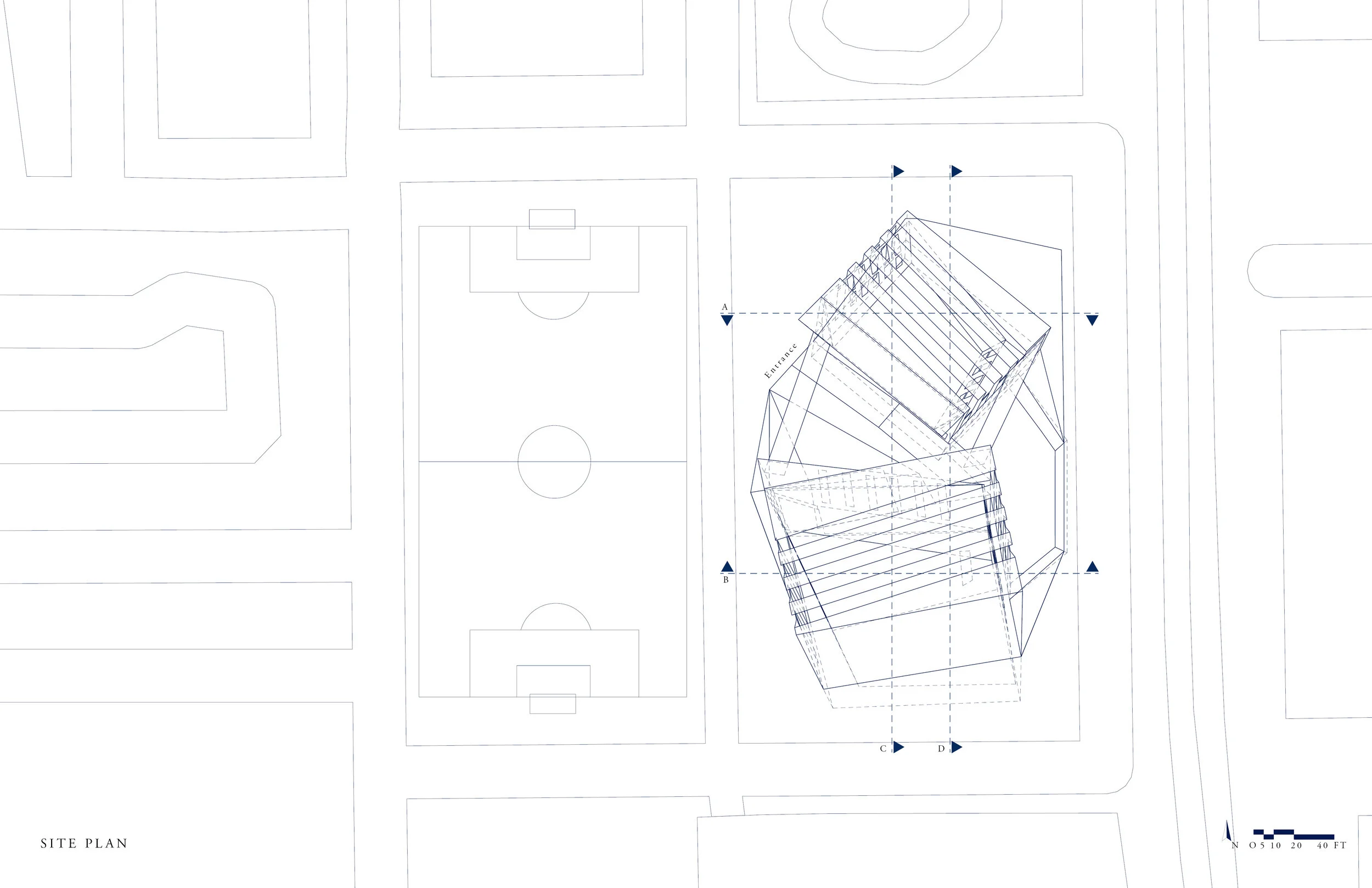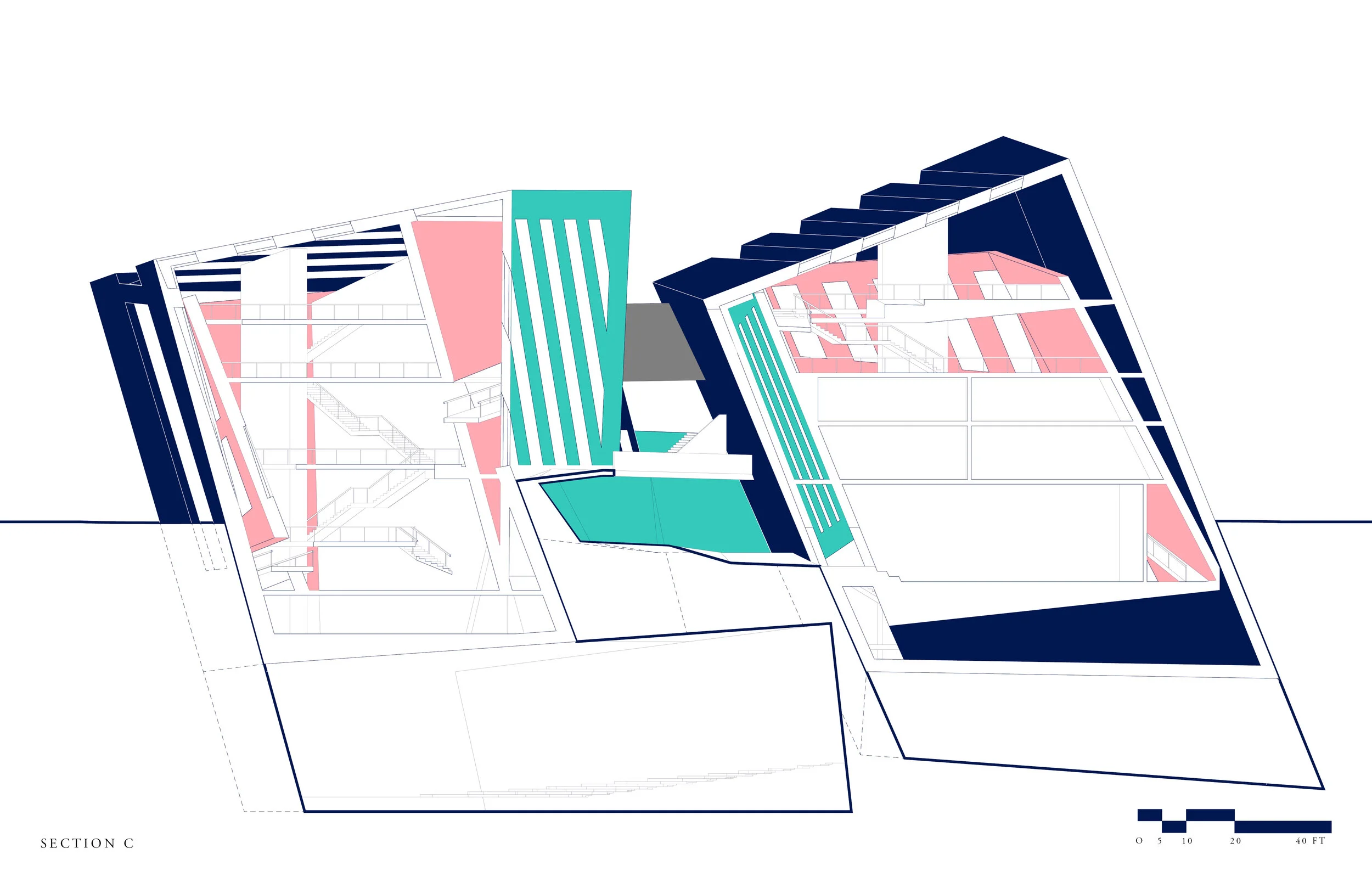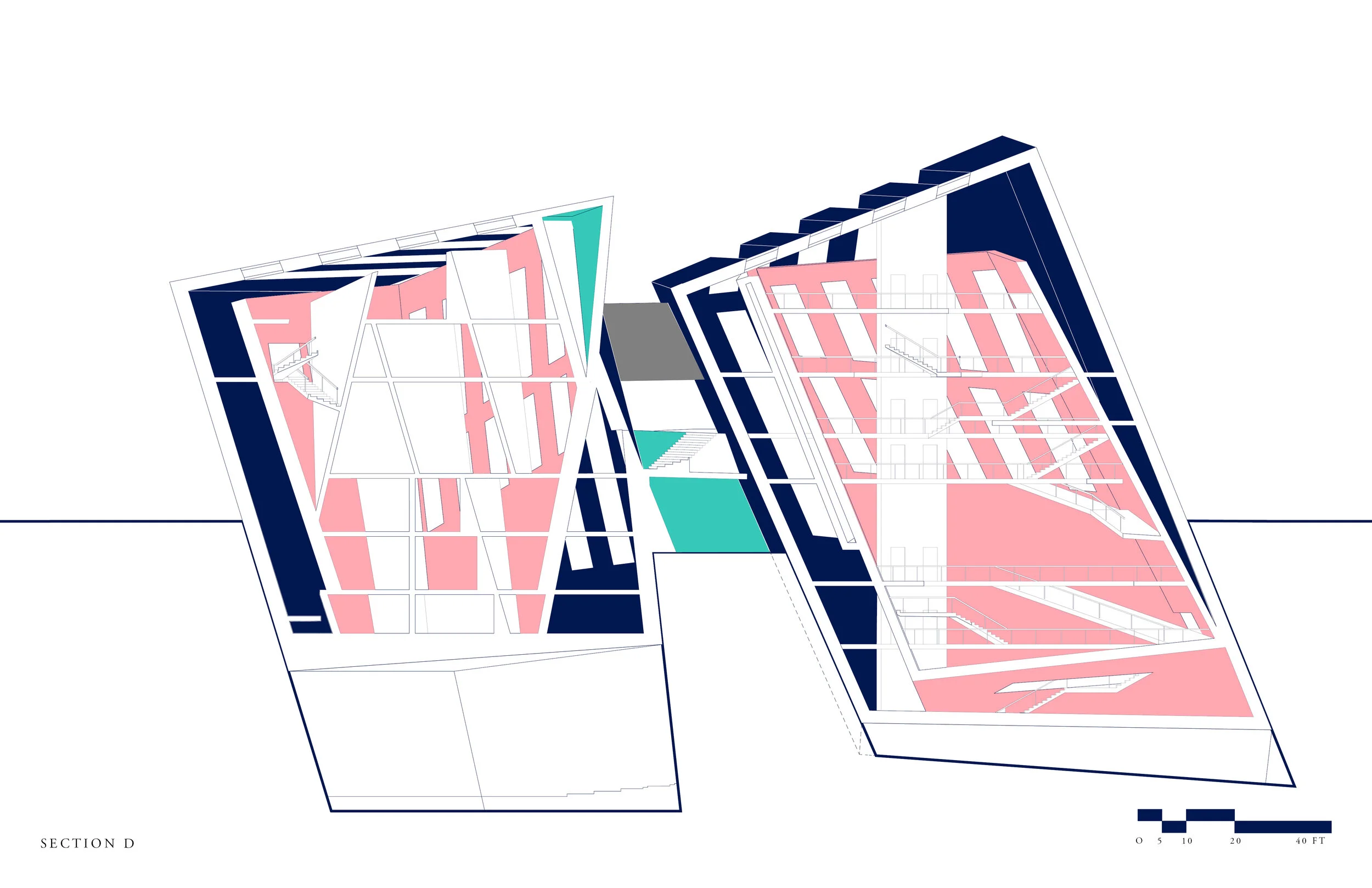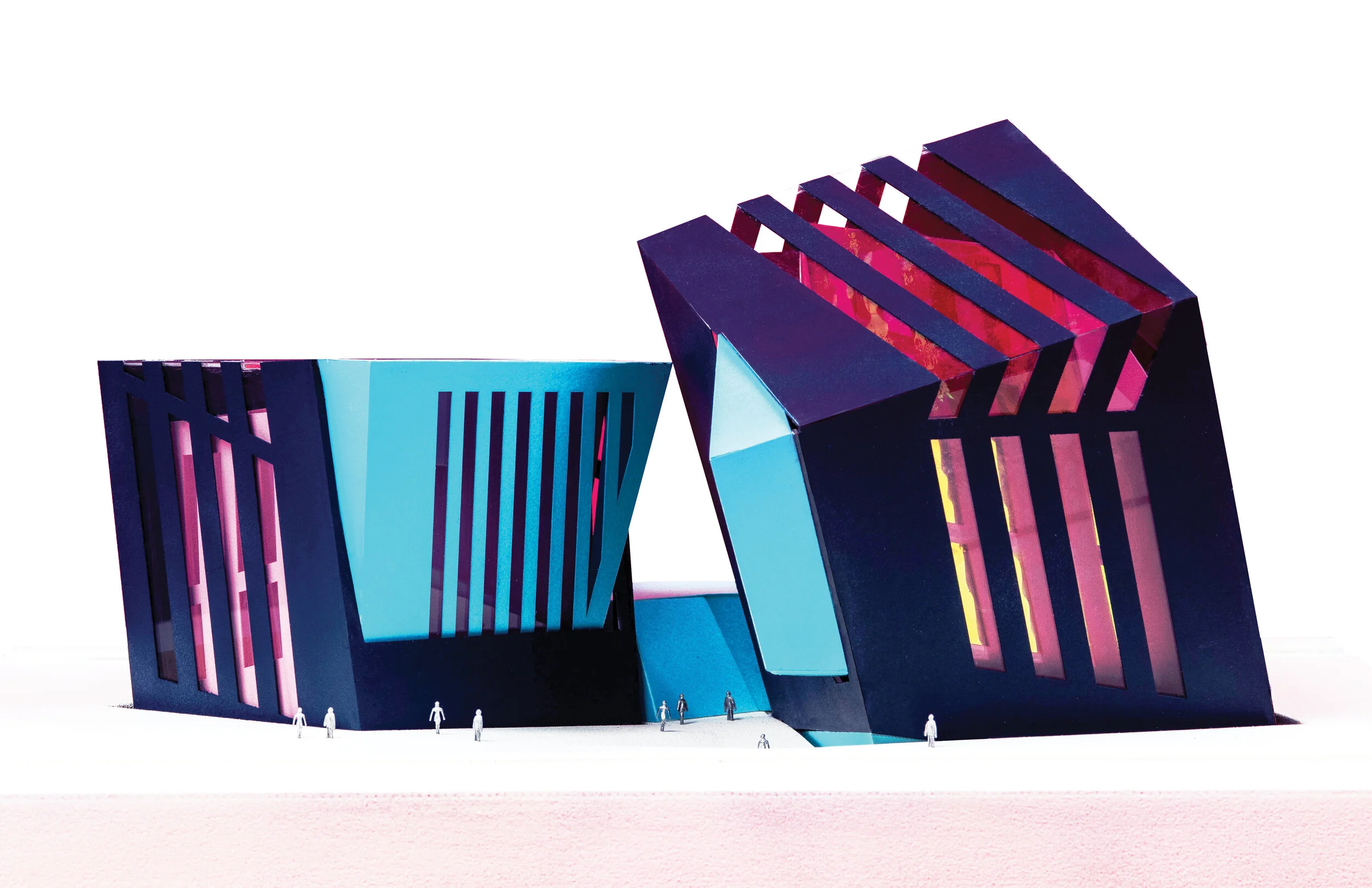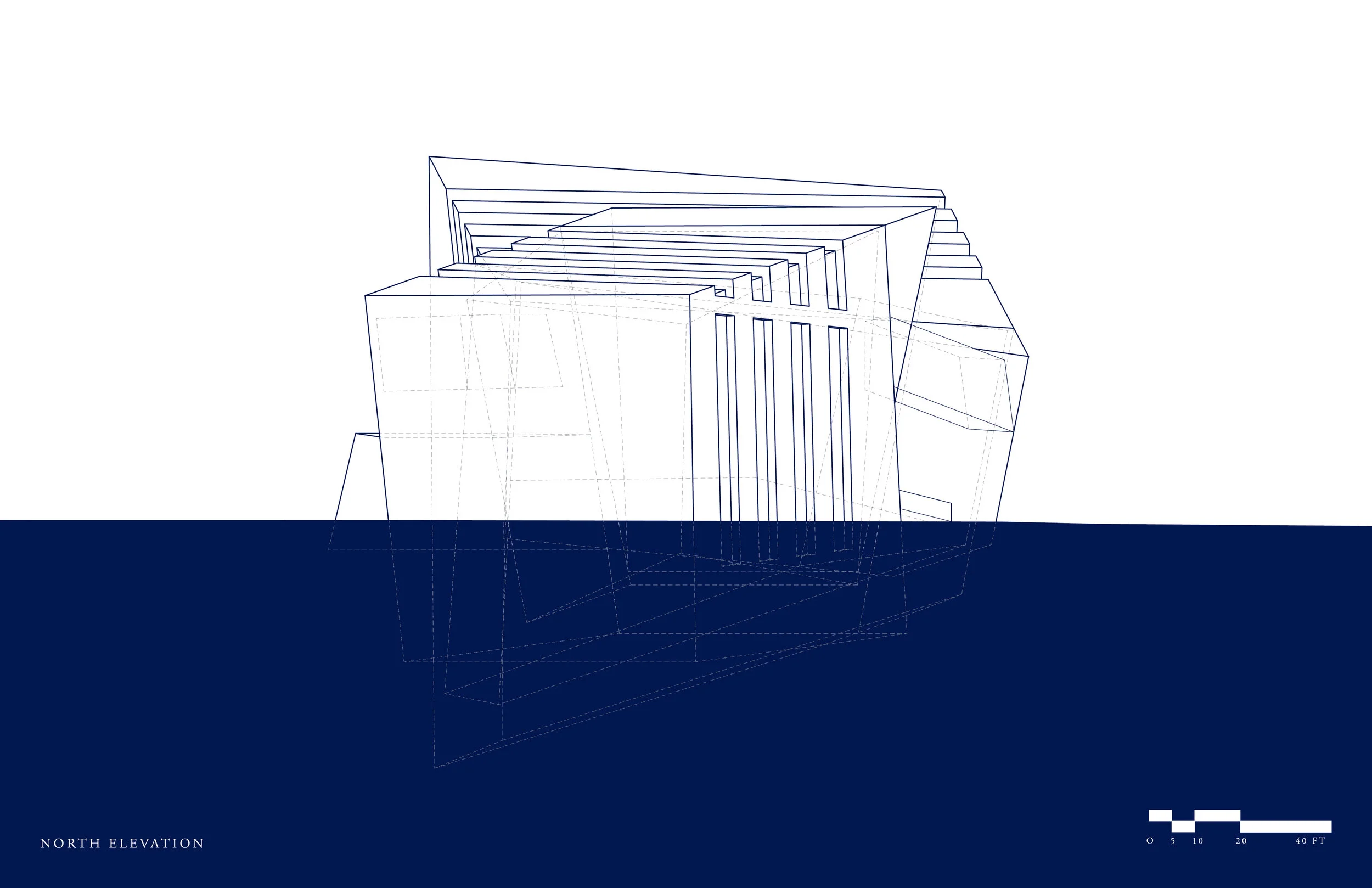My thesis project “Blink Brink” looks at designing an elementary and middle school In Chicago using a series of “Brink” conditions which is part of a formal investigation. The brink is an indication of fragile perception. It is an edge where no subjectivity rules, where modes of discourse struggle for dominance. It is an interface where the balcony, courtyard, window, gateway, staircase, and roof become typologies of performance and of expectation. It is the moment where the intermediate and the mundane indicate moments of intrigue and interest. The neutrality of these intermediate spaces becomes the most dynamic locations as they resist settling into categories. Hence, the brink is a point of indifference/weakness that in turn enact difference/power; the potential for the eventuality.
Many organizations in Chicago like Chicago International Charter School, Illinois Network of Charter Schools, National Association of Charter Schools, and Illinois State Charter School Commission advocate for the improvement of public education by leveraging the charter school model as a catalyst to transform lives and communities. They engage a diverse coalition of policymakers, school leaders, parents, and community members to create systemic change and secure high-quality schools for underserved communities.
The brink is a liminal connection between the inner and outer, an aperture that reveals a scene beyond, or a scene within, an impermeable membrane of some sort. The brink is the edge of the unknown which creates a sense of anticipation. The brink could lead you to unexpected experiences or simply to the banal. This becomes the focal point of feeling. This thesis would look into uncanny moments which don’t align with the norm. This involves a fusion of temporal and spatial factors by intersecting, overlapping, interlocking figures to build up into a sort of fluctuating configuration. Superimposition of axes and gridded spatial orders produce ambiguity of spatial organization resulting from a sequential order of a successive stratification of space. This creates a sense of depth by perception due to the overlap of spaces. This project would look at the juxtaposition of multiple layers of transitory spaces where each layer is slightly shifted, scaled, or mirrored. These new layers stacked on each other create spatial ambiguity by collapsing plan, elevation, and detail through juxtapositions of scale, projection, and rotation. This flattening of layers forms an intriguing formal and spatial quality. Hence the brink is the “in-between”.

